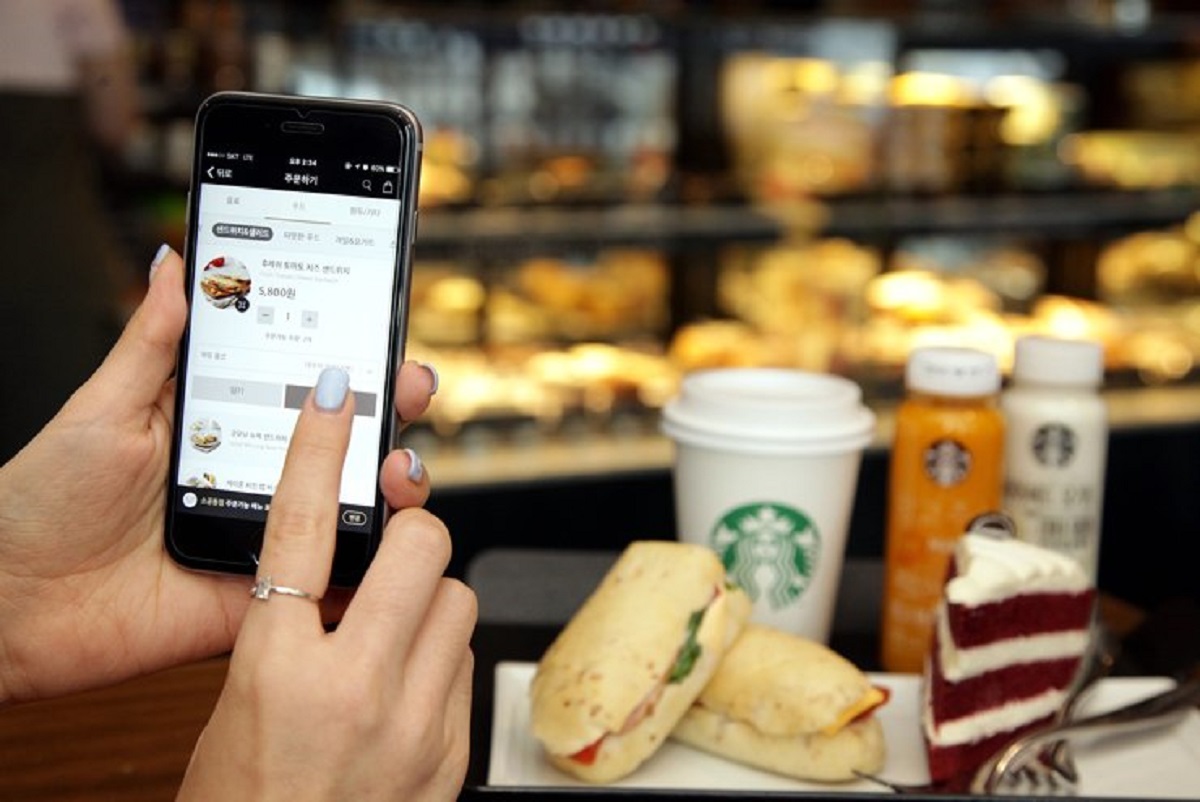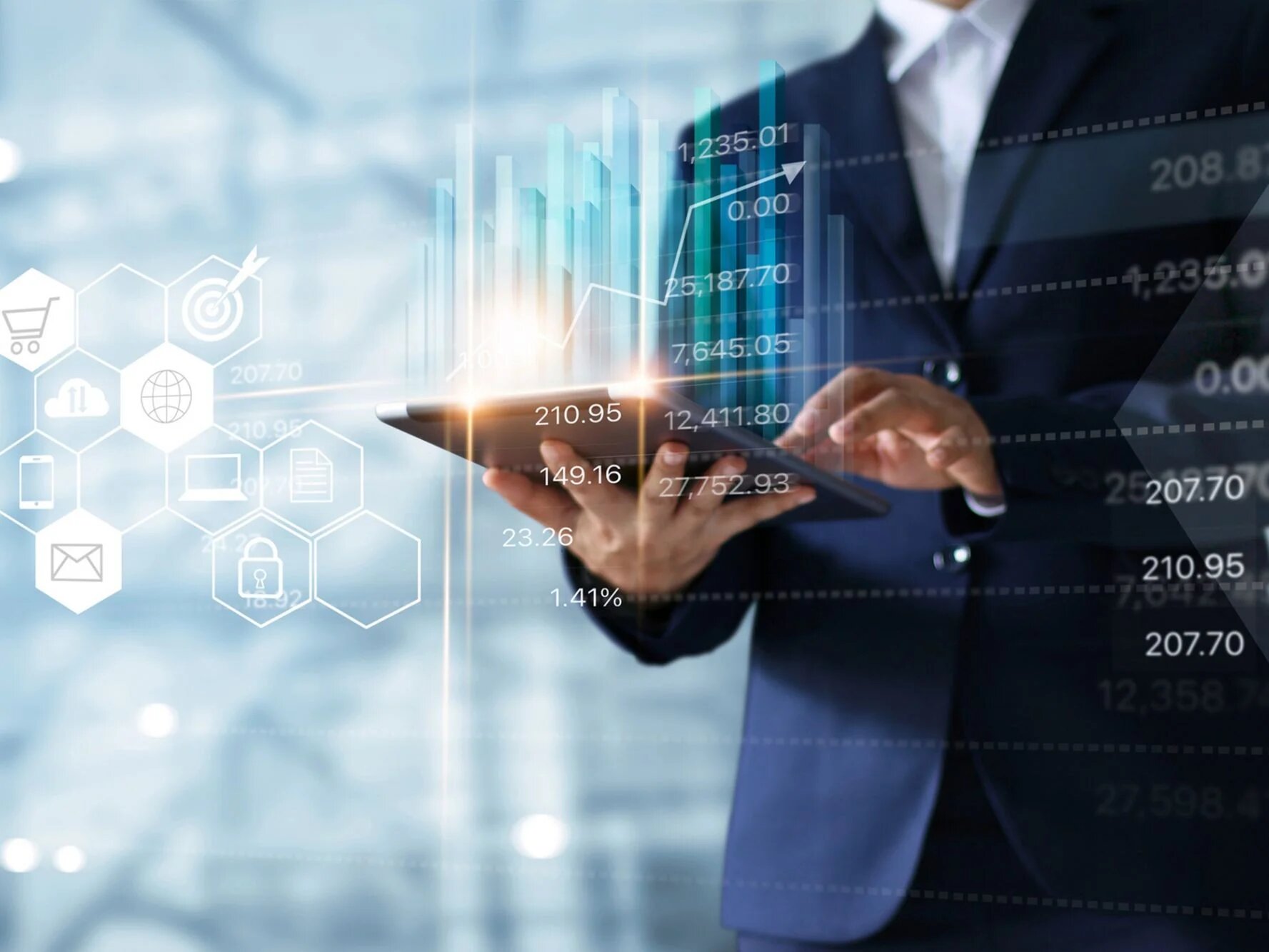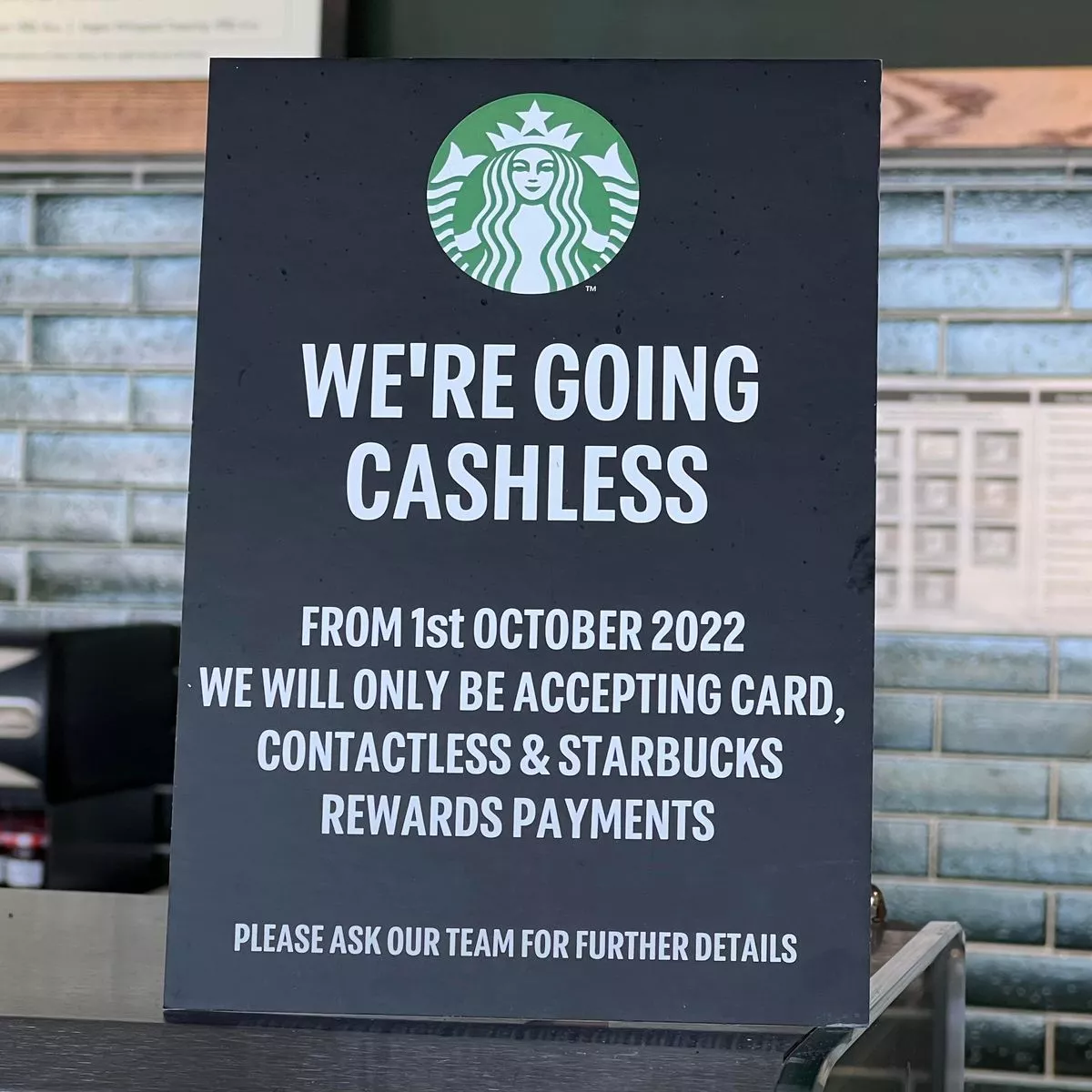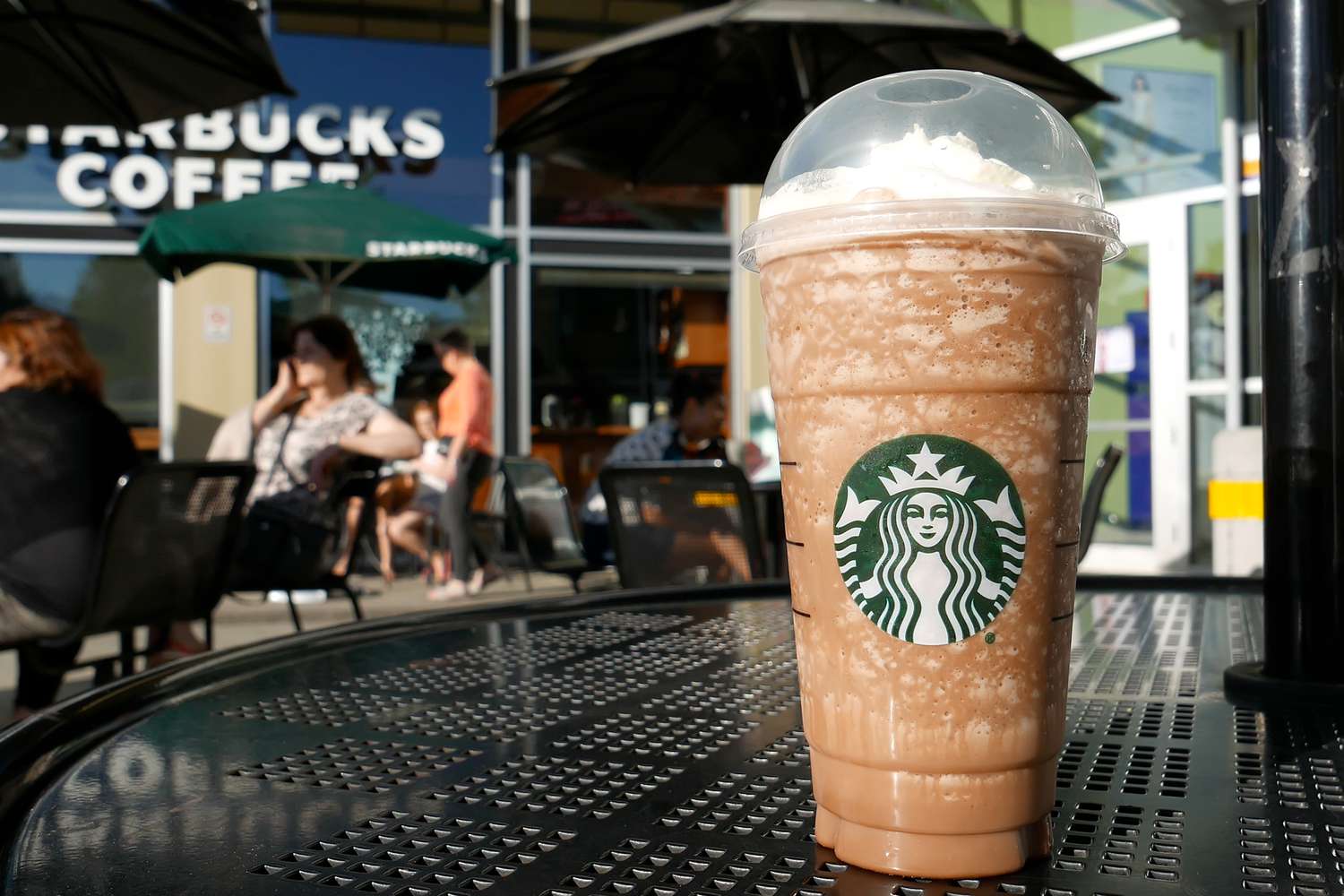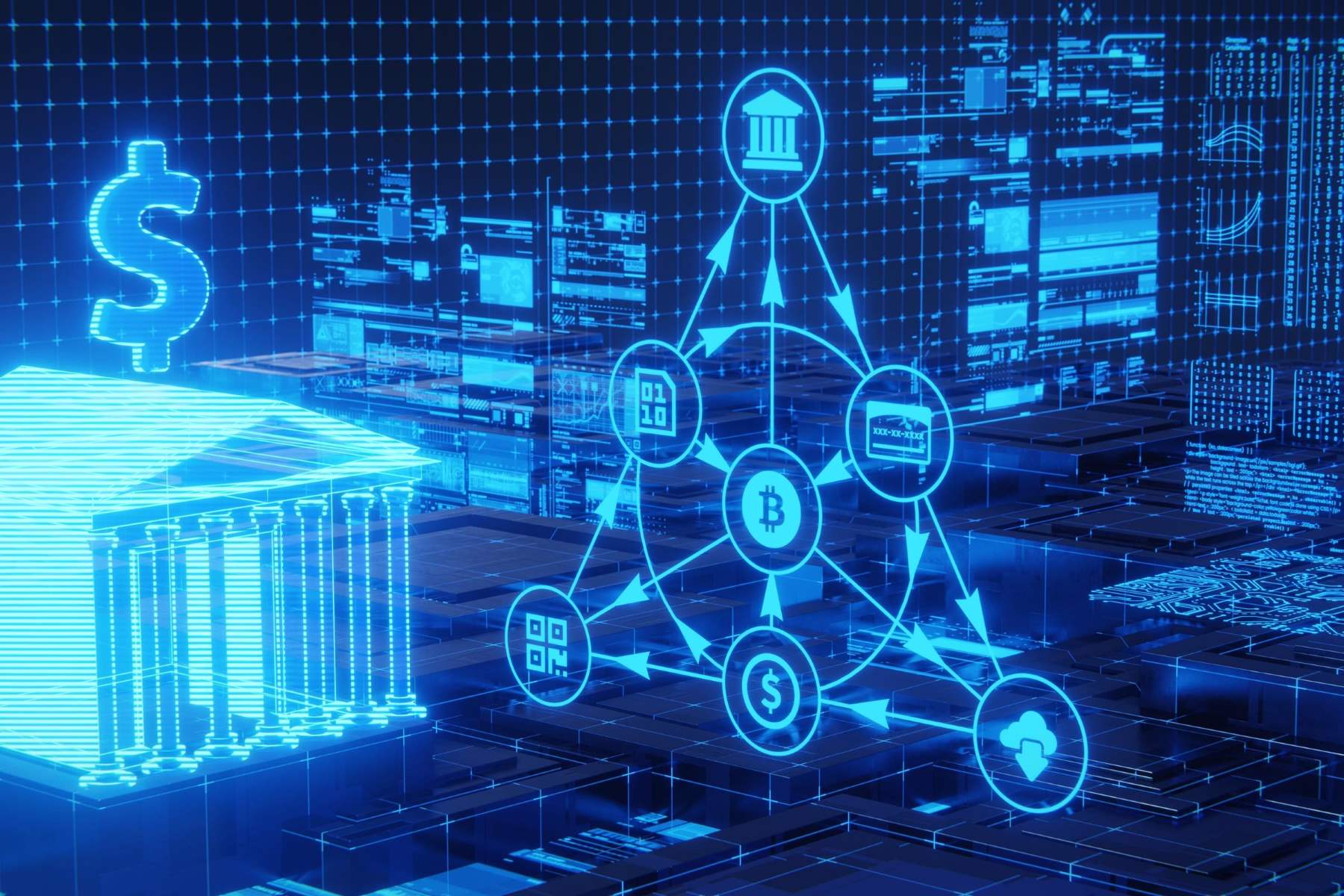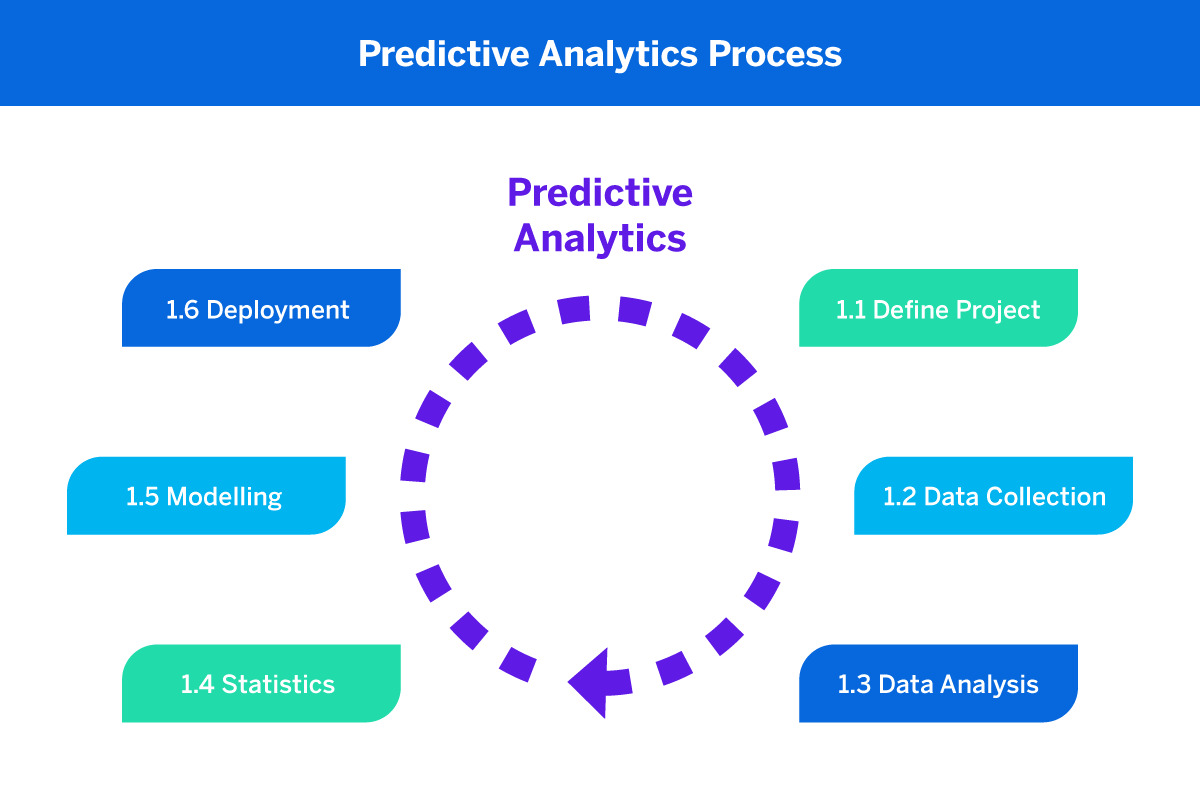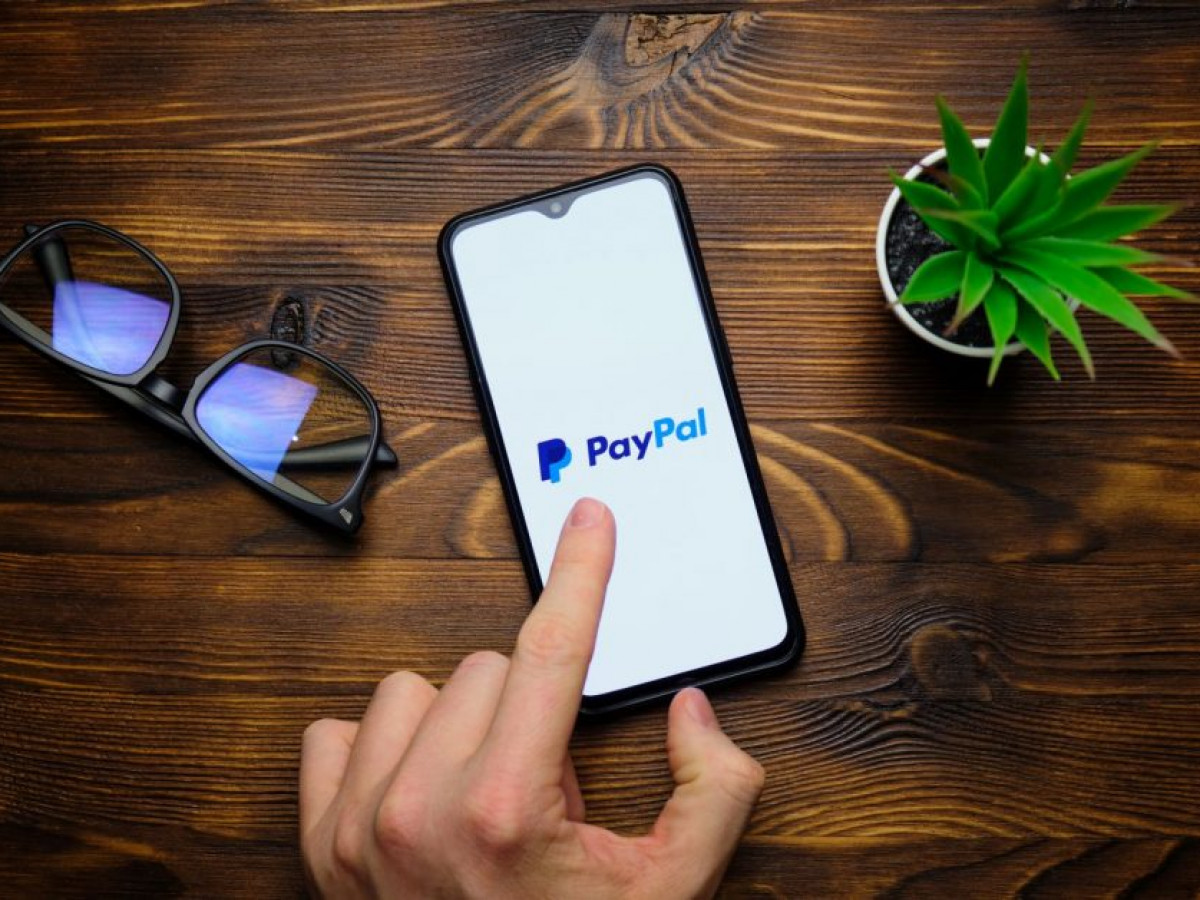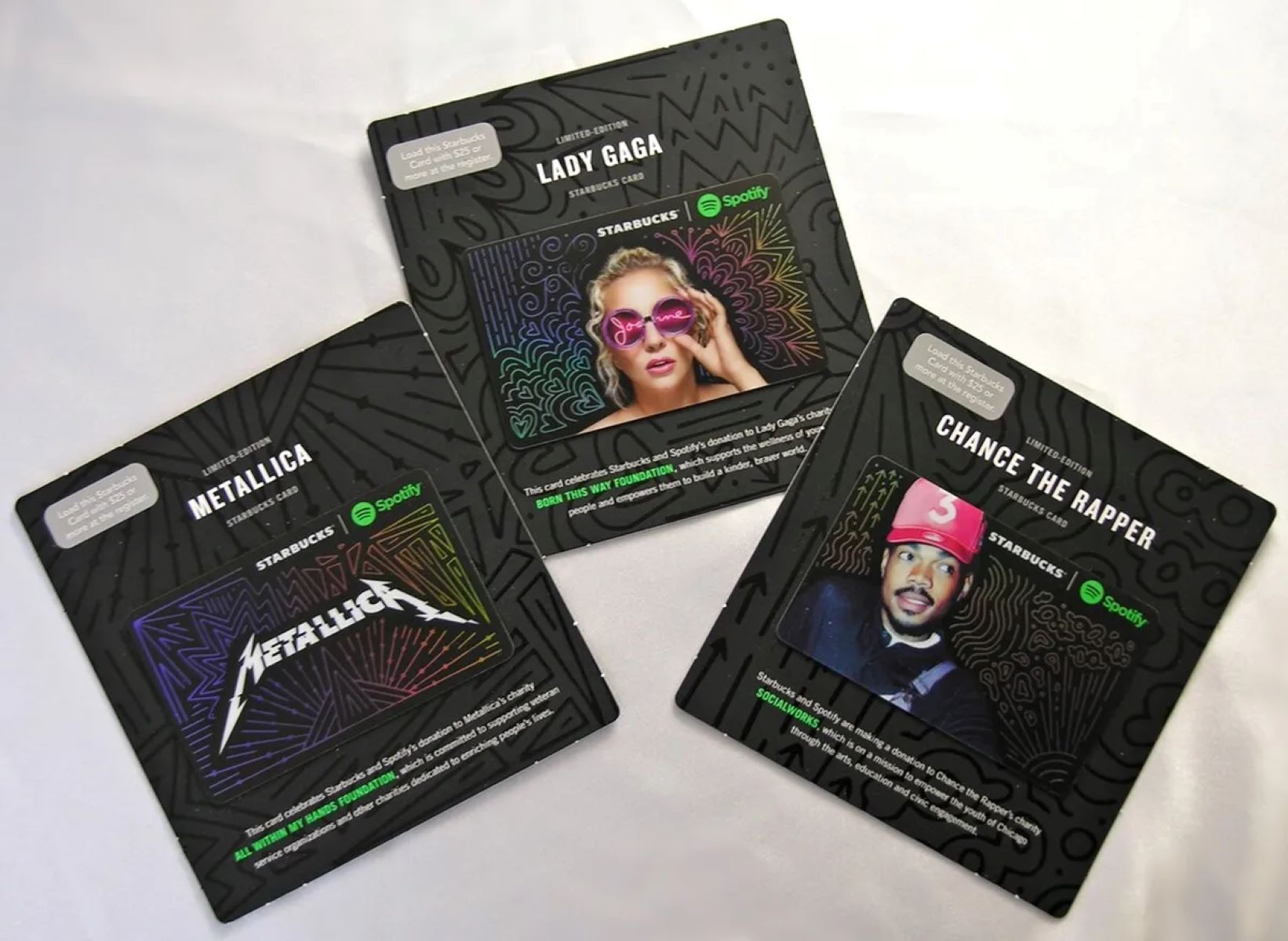Introduction
With the advent of technology, businesses are finding innovative ways to make use of the vast amounts of data available to them. One company that has successfully leveraged big data to transform its operations is Starbucks. The global coffee giant has implemented a comprehensive data-driven strategy to better understand its customers, enhance their overall experience, and drive business growth.
By analyzing and utilizing customer data, Starbucks has been able to make more informed decisions, optimize its operations, and create personalized marketing campaigns. Through its loyalty program, mobile app features, and advanced analytics, Starbucks has set a new benchmark for how big data can be leveraged in the retail industry.
In this article, we will explore how Starbucks effectively utilizes big data in various aspects of its business. From collecting customer data to optimizing its stores and improving inventory management, Starbucks demonstrates the power of data-driven decision-making.
By understanding the strategies that Starbucks employs, other businesses can gain insights and inspiration to harness the potential of big data in their own operations. Let’s dive in and explore the key ways in which Starbucks uses big data to drive its success.
Collection of Customer Data
At the core of Starbucks’ big data strategy lies its effective collection of customer data. Starbucks gathers a wealth of information through various touchpoints, enabling them to gain deep insights into customer behavior and preferences.
One of the primary sources of customer data is Starbucks’ highly successful loyalty program, Starbucks Rewards. Through this program, customers earn points and unlock exclusive benefits, such as free drinks and personalized offers. Every time a customer makes a purchase using their loyalty card or mobile app, Starbucks collects valuable data about their preferences, purchase history, and visit frequency.
In addition to the loyalty program, Starbucks also collects data through its mobile app, which boasts a robust set of features. Customers can customize and place orders ahead of time, allowing Starbucks to collect data on individual preferences and popular menu items. The app also tracks location data, making it possible for Starbucks to analyze foot traffic patterns and optimize store layouts.
Furthermore, Starbucks gathers customer data through its Wi-Fi networks in-store, which requires customers to provide basic information before accessing the network. This data includes email addresses, demographics, and even social media profiles. By combining various data sources, Starbucks is able to create a comprehensive view of its customers and better understand their preferences and behaviors.
It is important to note that Starbucks takes data privacy and security seriously. They have implemented stringent measures to protect customer information and adhere to privacy regulations to ensure data is collected and used ethically and responsibly.
By effectively collecting customer data, Starbucks gains valuable insights that drive decision-making. This data forms the foundation for their personalized marketing campaigns, menu and pricing optimizations, and store enhancements.
Loyalty Program
Starbucks’ loyalty program, known as Starbucks Rewards, is a key component of its data-driven approach. The program not only encourages customer loyalty but also generates a wealth of data that Starbucks can leverage to improve its business operations.
Starbucks Rewards offers customers exclusive benefits and rewards for their continued patronage. By signing up for the program, customers earn stars for each purchase made, which can be redeemed for free drinks, food items, and customizations. In addition to the instant gratification of rewards, members also gain access to personalized offers and promotions based on their purchasing history and preferences.
This loyalty program serves as a powerful data collection tool for Starbucks. It allows the company to gather detailed information about individual customer preferences, purchase patterns, and even preferences in terms of flavors and customization options. This data enables Starbucks to develop a deep understanding of its customers’ needs and preferences on an individual level.
With this wealth of data, Starbucks can create highly targeted marketing campaigns. They can send personalized offers and recommendations to their customers, enhancing their experience and increasing the likelihood of repeat purchases. For example, if a customer frequently orders a specific drink, Starbucks can send them a coupon or offer related to that drink to encourage them to visit again.
Furthermore, the loyalty program also provides Starbucks with valuable insights for product development. By analyzing customer preferences and purchasing behavior, Starbucks can introduce new items or make changes to its existing menu to better meet customer demands. It ensures that Starbucks stays ahead of trends and offers products that align with its customers’ tastes.
The loyalty program also fosters a sense of community among Starbucks’ customers. Members can track their progress, level up, and engage with other members through the Starbucks mobile app. This sense of belonging and exclusivity strengthens customer loyalty and encourages them to choose Starbucks over competitors.
In summary, Starbucks Rewards not only incentivizes customer loyalty but also serves as a mechanism for acquiring valuable customer data. This data, in turn, is used to create personalized marketing campaigns, improve product offerings, and foster a sense of community among customers.
Mobile App and Order Ahead Feature
Starbucks’ mobile app is a key tool in their data-driven strategy, providing customers with convenience and personalized experiences. The mobile app not only allows customers to place orders but also plays a crucial role in collecting data and enhancing customer interactions.
Starbucks’ order ahead feature allows customers to skip the line and have their drinks and food items ready for pickup at their preferred store. The convenience of ordering ahead saves customers valuable time and enhances their overall experience. But this feature also generates a significant amount of data for Starbucks.
When customers use the order ahead feature, Starbucks collects data on individual preferences, popular menu items, and peak ordering times. This data is invaluable as it helps Starbucks optimize its operations, streamline the ordering process, and ensure efficient fulfillment of orders.
Additionally, the mobile app enables customers to customize their orders to their liking. From selecting the type of milk to adding syrups, customers have the ability to personalize their drinks and food items. Starbucks collects this customization data, which enables them to understand individual preferences and tailor their offerings to meet customer demands.
The mobile app also serves as a platform for Starbucks to directly engage with its customers. By sending targeted push notifications and offering personalized promotions, Starbucks can effectively communicate with its app users. This direct line of communication helps Starbucks reach its customers with timely offers, such as discounts during slower periods or a promotion for a customer’s favorite drink.
Furthermore, the mobile app provides a seamless and frictionless payment experience. Customers can link their payment methods to the app, allowing for quick and secure transactions. This not only enhances the customer experience but also enables Starbucks to collect purchase data and analyze transaction patterns.
Through the mobile app and order ahead feature, Starbucks not only improves customer convenience but also collects valuable data that helps optimize operations, personalize promotions, and improve overall customer satisfaction. The app plays a pivotal role in Starbucks’ data-driven strategy, contributing to the company’s continued success.
Personalized Marketing Campaigns
One of the key ways Starbucks utilizes big data is through their personalized marketing campaigns. By leveraging customer data and advanced analytics, Starbucks is able to create targeted and relevant marketing messages that resonate with their customers.
With access to customer preferences, purchase history, and demographic data, Starbucks can segment their customer base and create customized marketing campaigns. For example, they can send offers and promotions tailored to specific customer groups, such as those who prefer iced drinks or have a particular flavor preference.
This level of personalization goes beyond generic mass marketing and allows Starbucks to connect with their customers on a deeper level. By tailoring their messages based on individual preferences, Starbucks is able to foster a sense of customer loyalty and build stronger connections with their target audience.
Moreover, Starbucks uses data to optimize the timing of their marketing campaigns. By analyzing customer behavior and patterns, they can identify the best times to send out offers or promotions. For instance, they may choose to send a coupon for a morning coffee to customers who frequently make purchases during that time of day.
In addition to targeted campaigns, Starbucks also utilizes personalized recommendations to enhance the customer experience. Through data analytics, Starbucks can recommend new products or menu items to individual customers based on their past behavior. These recommendations can be delivered through the mobile app, email campaigns, or even in-store recommendations.
An example of Starbucks’ personalized marketing approach is their annual holiday promotion. Based on customer preferences and past purchases, Starbucks designs and promotes seasonal beverages and food items like the Pumpkin Spice Latte or the Peppermint Mocha. These limited-time offerings generate excitement among customers and drive increased foot traffic to their stores.
By leveraging customer data and deploying personalized marketing campaigns, Starbucks can effectively engage their customers, increase brand loyalty, and drive sales. The ability to deliver targeted, customized messages based on individual preferences sets Starbucks apart in the competitive market and reinforces their position as a customer-centric company.
Store Optimization
Store optimization is another area where Starbucks effectively utilizes big data to enhance the customer experience and streamline operations. By analyzing data collected from various sources, Starbucks can optimize store layouts, staffing levels, and inventory management.
One way Starbucks collects data for store optimization is through its mobile app. The app tracks customer location data, allowing Starbucks to analyze foot traffic patterns and identify peak hours of customer activity. With this information, Starbucks can strategically allocate resources and staff during busy periods, ensuring efficient customer service.
In addition to foot traffic analysis, Starbucks also collects data from in-store Wi-Fi networks. When customers connect to the Wi-Fi, they are often required to provide basic information such as their email address. By analyzing this data, Starbucks can gain insights into customer demographics, preferred store locations, and visit frequency.
With these data-driven insights, Starbucks can optimize store layouts to improve customer flow and maximize efficiency. They can identify popular areas and products, ensuring that these are strategically placed within the store to drive additional sales. Moreover, by analyzing customer preferences and purchase patterns, Starbucks can tailor offerings and promotions at specific store locations to better meet local customer demands.
Inventory management is another aspect of store optimization where big data plays a crucial role. Through the collection and analysis of sales data, Starbucks can accurately predict demand and adjust inventory levels accordingly. This allows them to minimize stockouts and wastage while ensuring that popular items are always in stock. By optimizing inventory, Starbucks can improve customer satisfaction and increase sales by providing a seamless experience.
Furthermore, data analysis enables Starbucks to identify operational inefficiencies and implement improvements. By analyzing data on order fulfillment times, customer wait times, and customer feedback, Starbucks can identify areas for improvement and take corrective actions to enhance the overall customer experience.
In summary, Starbucks utilizes big data to optimize its stores by analyzing foot traffic patterns, customer demographics, and sales data. This data-driven approach enables Starbucks to strategically manage staffing, optimize inventory levels, and enhance the overall customer experience.
Inventory Management
Inventory management is a critical aspect of Starbucks’ operations, and big data plays a vital role in ensuring effective inventory management across its stores. By leveraging data analytics, Starbucks is able to optimize inventory levels, minimize stockouts, and ensure that popular items are always available to meet customer demands.
One way Starbucks collects data for inventory management is through its point of sale (POS) systems. Every transaction made at a Starbucks store generates data on the items sold, quantity, and time of purchase. By analyzing this data, Starbucks can identify sales patterns and trends, allowing them to forecast demand and adjust inventory levels accordingly.
It is crucial for Starbucks to strike a balance between having enough inventory to meet customer demands and avoiding excessive stock that may lead to waste or increased holding costs. Through the analysis of historical sales data and real-time demand, Starbucks can optimize their inventory levels and ensure that each store has the right amount of stock at any given time.
Big data also helps Starbucks manage its supply chain effectively. By analyzing supplier data, transportation data, and production data, Starbucks can identify potential bottlenecks and inefficiencies in the supply chain. This enables them to collaborate with suppliers and ensure a seamless flow of inventory from production to stores.
In addition to internal data, Starbucks also utilizes external data sources to enhance its inventory management. For example, Starbucks analyzes weather data to understand how weather conditions affect customer behavior and demand patterns. This allows them to adjust inventory levels or introduce seasonal offerings accordingly. Additionally, by analyzing social media trends and customer sentiment, Starbucks can anticipate shifts in demand and adjust their inventory strategies accordingly.
Having a robust inventory management system in place not only ensures customer satisfaction by reducing stockouts but also helps streamline operations and minimize waste. By utilizing big data and advanced analytics, Starbucks can optimize inventory levels, improve supply chain efficiency, and ultimately drive profitability.
In summary, big data enables Starbucks to gain insights into sales patterns, forecast demand, and streamline its supply chain for effective inventory management. By leveraging data analytics, Starbucks ensures that its stores have the right amount of stock at the right time, minimizing stockouts and waste while maximizing customer satisfaction.
Pricing and Menu Optimization
Starbucks utilizes big data to optimize pricing strategies and menu offerings, ensuring that they meet customer expectations while maximizing revenue and profitability. Through data analytics, Starbucks can make data-driven decisions regarding pricing adjustments and menu optimizations.
One key aspect of pricing optimization is dynamic pricing. Starbucks leverages data on customer demand, purchasing behavior, and competitor analysis to adjust prices in real-time. For instance, during quieter periods, Starbucks may offer promotional pricing or discounts to attract more customers. Conversely, during peak hours, prices may be adjusted slightly higher to align with increased demand.
Data analysis also allows Starbucks to identify popular items and set appropriate prices based on customer preferences and willingness to pay. By tracking sales data, customer feedback, and market trends, Starbucks can optimize pricing to maximize revenue and ensure that both customers and the company benefit.
Furthermore, Starbucks employs big data analysis to optimize their menu offerings. By analyzing customer preferences, purchase patterns, and trends, Starbucks can make informed decisions about which items to introduce, modify, or discontinue. This approach ensures that the menu is aligned with customer demands, allowing Starbucks to offer a curated selection of items that resonate with their target audience.
Menu optimization also involves analyzing the performance of menu items and adjusting prices, ingredient costs, or portion sizes accordingly. Through data analytics, Starbucks can identify low-performing items and make necessary adjustments to improve profitability and customer satisfaction.
Another aspect of menu optimization is personalization. Starbucks utilizes data to develop personalized recommendations, suggesting specific menu items to individual customers based on their preferences and purchasing history. These recommendations can be delivered through the mobile app, email campaigns, or even through targeted promotions at the point of sale.
By leveraging big data, Starbucks is able to optimize its pricing strategies, menu offerings, and promotions, contributing to customer satisfaction and business growth. Through data-driven decision-making, Starbucks ensures that pricing is competitive, menu options are enticing, and customers feel valued and catered to.
In summary, Starbucks utilizes big data to optimize pricing strategies and menu offerings. By analyzing customer data, market trends, and competitive insights, Starbucks can make informed decisions about pricing adjustments, personalized recommendations, and menu optimizations to maximize customer satisfaction and drive business success.
Predictive Analytics
Predictive analytics is a powerful tool that Starbucks utilizes to forecast future trends, anticipate customer behavior, and make data-driven decisions. By leveraging historical data and advanced analytical models, Starbucks can gain valuable insights to inform their strategies and stay ahead of changing market dynamics.
One key area where predictive analytics is applied is in demand forecasting. By analyzing historical sales data, seasonality patterns, and external factors such as weather or holidays, Starbucks can predict future demand for specific products or menu items. This allows them to optimize inventory levels, streamline supply chain operations, and ensure that they are well-prepared to meet customer demands.
Predictive analytics also plays a crucial role in optimizing staffing levels. By analyzing historical foot traffic data, sales patterns, and other factors such as store location and time of day, Starbucks can accurately forecast customer traffic and allocate the appropriate number of employees during different shifts. This ensures efficient customer service and avoids either overstaffing or understaffing situations.
Furthermore, predictive analytics helps Starbucks in personalizing their marketing efforts. By leveraging data on customer preferences, purchase history, and demographic information, Starbucks can create targeted marketing campaigns tailored to individual customers. Predictive models can anticipate what products or promotions will be most appealing to specific customers, driving customer engagement and enhancing the effectiveness of marketing campaigns.
Another application of predictive analytics at Starbucks is in identifying and preventing potential quality or operational issues. By analyzing data from various sources, such as customer feedback, social media sentiment, and equipment performance data, Starbucks can proactively identify and address any emerging issues before they escalate. This ensures consistent product quality and a seamless customer experience.
Moreover, predictive analytics helps Starbucks in optimizing store locations and identifying potential new market opportunities. By analyzing demographic data, competitor landscapes, and market trends, Starbucks can make informed decisions about where to open new stores or optimize existing ones. This helps them maximize their market presence and target areas with high growth potential.
Overall, predictive analytics empowers Starbucks to make strategic decisions based on data-driven insights. By leveraging historical and real-time data, advanced analytics, and predictive modeling techniques, Starbucks stays ahead of the curve, anticipates customer needs, and continuously improves its operational and marketing efforts.
Conclusion
In conclusion, Starbucks has demonstrated its prowess in leveraging big data to drive its success in numerous aspects of its business. From the collection of customer data to personalized marketing campaigns, store optimization, inventory management, pricing and menu optimization, and predictive analytics, Starbucks has embraced data-driven decision-making to enhance the customer experience, streamline operations, and maximize profitability.
By effectively collecting and analyzing customer data, Starbucks gains deep insights into customer preferences, purchasing behavior, and trends. This enables them to create personalized marketing campaigns, tailor menu offerings, and optimize pricing to meet individual customer needs and expectations.
Moreover, Starbucks utilizes big data to optimize store layouts, staffing levels, and inventory management. By leveraging data on foot traffic patterns, customer demographics, and sales trends, Starbucks can strategically allocate resources, streamline operations, and improve customer satisfaction.
Predictive analytics further empowers Starbucks to forecast future trends, anticipate customer behavior, and make data-driven decisions. Through predictive models, Starbucks can forecast demand, optimize staffing levels, personalize marketing efforts, and identify potential opportunities for growth.
Overall, Starbucks sets a stellar example of how companies can utilize big data to drive innovation, improve customer experiences, and achieve business success. By embracing data-driven strategies, businesses can better understand their customers, optimize their operations, and stay ahead of the competition in today’s digital landscape.
As technology continues to evolve, and data becomes increasingly abundant, it is essential for businesses to adapt and harness the power of big data. By following in the footsteps of Starbucks, companies across various industries can unlock the potential of big data and thrive in the ever-changing business landscape.







